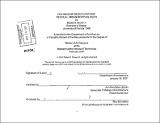| dc.contributor.advisor | Anne Pendleton-Jullian. | en_US |
| dc.contributor.author | Brown, Robert S. (Robert Stephen), 1973- | en_US |
| dc.contributor.other | Massachusetts Institute of Technology. Dept. of Architecture. | en_US |
| dc.coverage.spatial | n-us-ma | |
| dc.date.accessioned | 2011-07-18T14:02:33Z | |
| dc.date.available | 2011-07-18T14:02:33Z | |
| dc.date.copyright | 2001 | en_US |
| dc.date.issued | 2001 | en_US |
| dc.identifier.uri | http://hdl.handle.net/1721.1/64909 | |
| dc.description | Thesis (M.Arch.)--Massachusetts Institute of Technology, Dept. of Architecture, 2001. | en_US |
| dc.description | Includes bibliographical references (p. 65-67). | en_US |
| dc.description.abstract | This thesis aims at establishing a dialogs between urban algorithms and individual space in Boston's Back Bay. Using the vehicle of typology as a basis, unit alteration and reprogramming are explored as urban systems. The design implications of introducing these altered forms of domestic morphology into existing urban housing environments are the basis of this thesis. Titled by this proposal as "secondary occupations," it is into the site of Boston's Back Bay as a collective prototype that these proposals of domesticity are placed. The basis of research is a mapping of the development of the Back Bay in terms of the "individual". This rationalization starts at the scale of the housing unit or cell, then the building, the block, and ultimately the district. Secondarily, the reintroduction of the contemporary inhabitant into this region is analyzed in terms of its possible occupation and use. At the urban scale, existing structuring rules of the city form are determined through mapping locational factors and development patterns. The alteration and analysis of these patterns becomes a locational and programmatic tool for future occupancy. Through this mapping, a series of derivative interventions in the urban fabric emerge. These are based on the primary usages of work/domesticity through which the individual inhabits the city. Urban issues of public vs. private and ownership vs. concurrency become the languages of this occupation. Programmatically, these occupations mediate the constraints of the automobile and existing visual fields. Typologically, the morphological systems of the Back Bay become reoccupied by secondary structures of flexible spaces and movable domestic prototypes. | en_US |
| dc.description.statementofresponsibility | by Robert S. Brown, III. | en_US |
| dc.format.extent | 67 p. | en_US |
| dc.language.iso | eng | en_US |
| dc.publisher | Massachusetts Institute of Technology | en_US |
| dc.rights | M.I.T. theses are protected by
copyright. They may be viewed from this source for any purpose, but
reproduction or distribution in any format is prohibited without written
permission. See provided URL for inquiries about permission. | en_US |
| dc.rights.uri | http://dspace.mit.edu/handle/1721.1/7582 | en_US |
| dc.subject | Architecture. | en_US |
| dc.title | Contingent [re]occupations : residual urban morphologies | en_US |
| dc.title.alternative | Contingent reoccupations : residual urban morphologies | en_US |
| dc.title.alternative | Residual urban morphologies | en_US |
| dc.type | Thesis | en_US |
| dc.description.degree | M.Arch. | en_US |
| dc.contributor.department | Massachusetts Institute of Technology. Department of Architecture | |
| dc.identifier.oclc | 48086357 | en_US |
